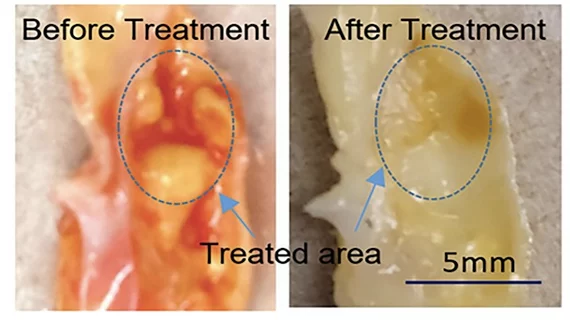New atherosclerosis treatment uses ultrasound-assisted lasers to break down plaque
Researchers have developed a new imaging-based technique for removing arterial plaque in patients with atherosclerosis, presenting their findings at the 182nd Meeting of the Acoustical Society of America (ASA).
The team’s method includes a low-power laser that works together with ultrasound technology. The pulsed laser created microbubbles, they explained, and sound waves from the ultrasound expands and collapses the microbubbles, using cavitation to mechanically break down the plaque.
“In conventional laser angioplasty, a high laser power is required for the entire cavitation process, whereas in our technology, a lower laser power is only required for initiating the cavitation process,” Rohit Singh, a PhD student with the University of Kansas Institute for Bioengineering Research, said in a statement. “Overall, the combination of ultrasound and laser reduces the need for laser power and improves the efficiency of atherosclerotic plaque removal.”
This technique was also designed to reduce the risk of restenosis, dissection or perforation.
This technology is still in the development phase, with in vivo studies expected to begin in the near future. Singh et al. hope to use this same method to treat other conditions, including ultrasound-assisted endovascular laser thrombolysis.
More information on the week-long ASA conference, held in Denver, is available here.
Related Cardiac Imaging Content:
VIDEO: Contrast media shortage impacting cardiac CT imaging
3D cardiac modeling solution for VT ablation receives FDA clearance
TPV valves, CTO PCI and more: SCAI 2022 updates for interventional cardiologists
Intravascular lithotripsy tied to superior long-term PAD, PCI outcomes at SCAI 2022

